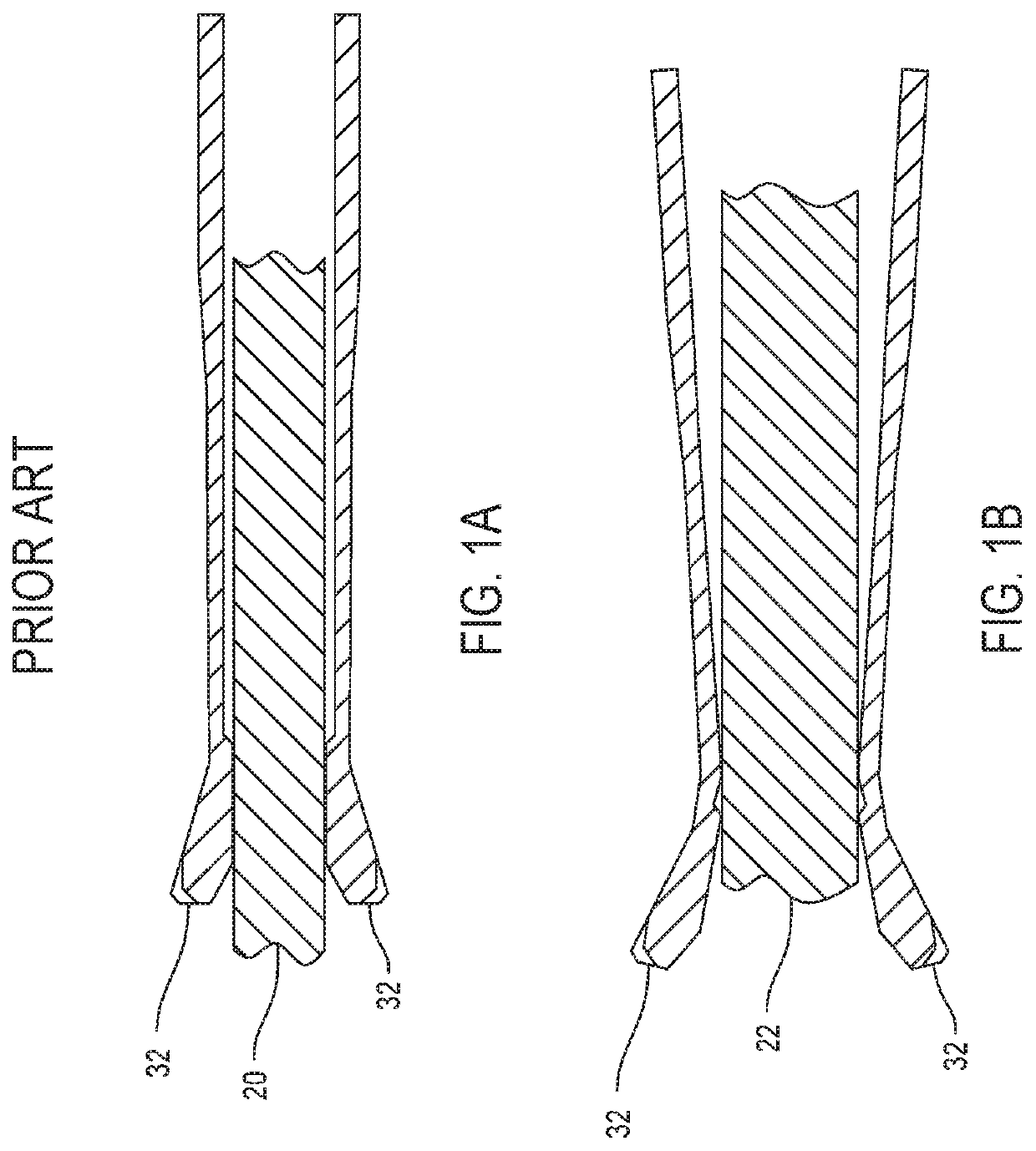Surgical wire driver capable of automatically adjusting for the diameter of the wire or pin being driven
a wire or pin diameter technology, applied in the field of wire drivers, can solve the problems of limiting the axial load to which the implant can be exposed, the likelihood of the wire or pin buckle, and the axial load to which the wire or pin is exposed, and achieves significant differences in the diameter
- Summary
- Abstract
- Description
- Claims
- Application Information
AI Technical Summary
Problems solved by technology
Method used
Image
Examples
first embodiment
I. First Embodiment
[0078]FIGS. 3 and 4 provide an overview of the wire driver of this invention. In the depicted version of the invention, the wire driver consists of a handpiece 42 to which a wire driver attachment 80 is removably attached. Handpiece 42 includes a housing or shell that forms the body 44 of the handpiece. The depicted handpiece 42 is pistol shaped. The body 44 includes a handgrip 46. A finger 48 extends distally forward from the distally directed surface of the handgrip 46. (Here “distal” is understood to mean away from the practitioner holding the handpiece, towards the site at which the wire or pin is to be driven into patient. “Proximal” is understood to mean towards the practitioner holding the handpiece, away from the site at which the wire or pin is to be fitted.) A barrel 52 is located above the handgrip 46. The barrel 52 extends both distally forward from and proximally away from the handgrip 46. A head 51 extends distally forward from the barrel. While not ...
first alternative embodiment
II. First Alternative Embodiment
[0157]FIGS. 37 and 387 depict an alternative wire driver 560 of this invention. Wire driver 560 has some of the same basic components of previously described wire driver 80. To avoid redundancy, the majority of these identical components are neither described not illustrated.
[0158]Wire driver 560 includes a lever assembly 562 different from lever assembly 270. Lever assembly 562 includes the previously described actuator link 306. Actuator link 306 is mounted to the legs 92 integral with housing 84 as described with respect to wire driver 80. A lever 564 pivots actuator link 306. Lever 564, like lever 232, has a top section that extends generally vertically downwardly from the housing 84 and middle section that extends perpendicularly and proximally away from the top section. Lever 564 also has a bottom section that extends perpendicularly downwardly from the middle section. The individual sections of lever 564 are not identified. Two parallel and spa...
second alternative embodiment
III. Second Alternative Embodiment
[0164]A second alternative wire driver 602 is now described by initial reference to FIGS. 39 and 40. Wire driver 602 includes the same basic internal components as wire drivers 80 and 560. Accordingly, these basic components are not redescribed.
[0165]Wire driver 602 includes a lever assembly 604. Lever assembly 604 includes a lever 606. Lever 606 includes a head 608. The lever head 608 includes two spaced apart parallel ears 610. Each ear 610 is formed with two through holes. A first through hole, hole 611, is located adjacent the top of each ear 610. A second through hole, hole 612, is located further from the tip. The ears extend downwardly to a base 613 also part of the head. A bent metal beam 614, also part of the lever 606, extends downwardly from head base 613. The beam 614 is shaped to immediately below the head, curve downwardly and proximally. The beam 614 then extends proximally so as to have a section that is generally parallel with the l...
PUM
 Login to View More
Login to View More Abstract
Description
Claims
Application Information
 Login to View More
Login to View More - R&D
- Intellectual Property
- Life Sciences
- Materials
- Tech Scout
- Unparalleled Data Quality
- Higher Quality Content
- 60% Fewer Hallucinations
Browse by: Latest US Patents, China's latest patents, Technical Efficacy Thesaurus, Application Domain, Technology Topic, Popular Technical Reports.
© 2025 PatSnap. All rights reserved.Legal|Privacy policy|Modern Slavery Act Transparency Statement|Sitemap|About US| Contact US: help@patsnap.com



